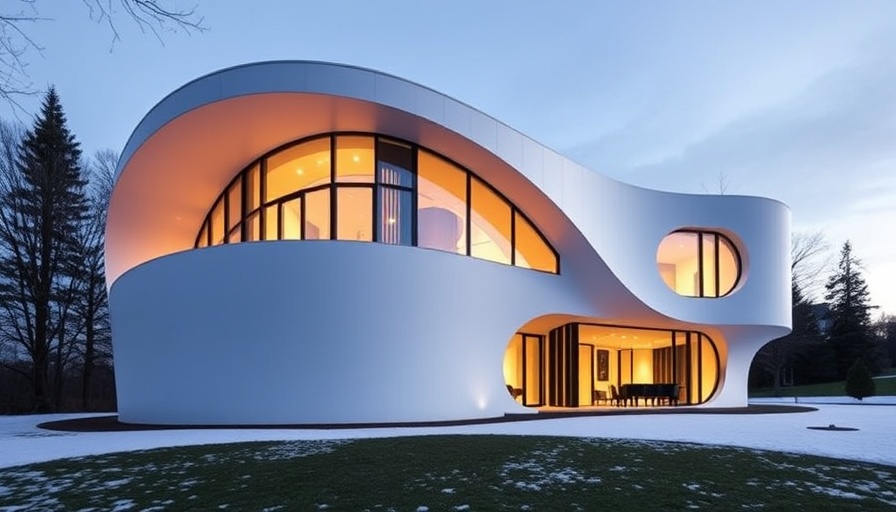
How the Piano House Redefines Comfort for Remote Workers
Imagine working from a home where the architecture isn't just beautiful, but also enhances your productivity and comfort. That is the unique offering of the Piano House, designed by Architecture Building Culture in West Vancouver. This modern home, named after a stunning white baby grand piano, brings together aesthetics and function, making it an inspiring example for digital nomads seeking to create their perfect workspace.
The Importance of Natural Light and Views
One of the standout features of the Piano House is its thoughtful use of natural light and expansive views. The main floor is designed to maximize interaction with the outdoors, allowing natural light to flood the open-plan living area. Research in ergonomics highlights that ample daylight not only boosts mood, increasing your motivation but also improves focus—essential for effective telecommuting. The large windows, designed to interconnect with the fern garden and towering cedars, set a serene backdrop that can enhance your remote working atmosphere.
Architectural Design Supporting Remote Work
The home’s unique curved facade and layered design create an inviting environment for working professionals. The inclusion of distinct zones both inside and outside supports the need for different working modes. The slatted screens offer privacy while still allowing air and light to circulate. This balance is crucial for maintaining airflow and reducing fatigue during long work hours, thereby ensuring higher productivity and comfort.
The Role of Ergonomic Design in Workspace
With digital nomads often spending hours at their workstations, ergonomic elements in residential design become essential. The Piano House's interiors feature built-in furniture and carefully curated materials that promote both form and function. The use of white oak and taupe colors contribute to a calming environment, which is vital for maintaining focus. It’s crucial to integrate ergonomics into your workspace at home, just as the architects did, ensuring that your seating, lighting, and workstation height meet ergonomic standards to prevent discomfort and strain.
Inspiration from the Piano House
For those looking to replicate the success of the Piano House, consider your surroundings. An efficient workspace should not only cater to comfort but also encompass elements that inspire creativity. The Piano House exemplifies how a well-planned space can adapt to one's lifestyle while remaining visually appealing. Start incorporating natural elements, open spaces, and distinct zones to create a workspace that mimics this progressive design ethos.
Creating Your Remote Oasis
As remote work continues to be a significant trend, drawing inspiration from modern architectural examples like the Piano House can enhance your work-from-home experience. Consider the feasibility of creating your own 'private oasis' at home by blending ergonomic design, natural light, and creative spaces into your workspace. This balance can lead to increased productivity and a much better work-life harmony.
Ultimately, the Piano House's architectural design isn't just about looks; it’s about creating a living and working environment that supports wellness and productivity. By adapting these principles to your workspace, you can elevate your remote working experience significantly.
 Add Row
Add Row  Add
Add 




Write A Comment